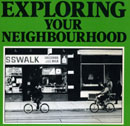

|
|

Exploring Your Neighbourhood
Scanlon, Tom
Publisher: Is Five Press, Toronto, CanadaYear Published: 1984 Pages: 65pp ISBN: 0-920934-18-8 Library of Congress Number: HT65.S32 Dewey: 307.06 Resource Type: Book Cx Number: CX6280 A guide for children to learn more about their neighbourhoods. Abstract: Exploring Your Neighbourhood by Tom Scanlan asks readers to take a closer look at the irneighbourhoods and understand and appreciate how residents "must work together to improve their local area." Each of the six chapters breaks down the essential components that make up a community. For example, where you live, where you travel, where you shop and where you play are based on the properties of your neighbourhood. Grocery stores, apartment buildings, recreation facilities and parks each represent areas of daily activity. Intended for classroom or home use, each chapter presents a series of exercises to better understand communities and how they are organized to meet the demands of the population. Even the slightest details about a location of a park or stoplight can make the biggest difference. One section discusses a park right across the street from a young kids' home. Unfortunately, there is a busy road separating their house from the park and the nearest lights are 2 blocks away, meaning at all times, children must be accompanied by an adult to cross the street safely. As well, the edge of the park leads into a ravine. If parents are not attentive they may lose sight of their child and panic. Both of these problems can be solved, the first by trying to obtain a crosswalk and the second by building a fence to prevent children from going into the ravine. Scanlan's exercises allow readers to think differently about the smallest details of urban planning that make the best use of public space and make living easier for the community members. Living in urban areas requires a delicate balance between the needs of business, transportation and public life. Exploring Your Neighbourhood asks essential questions which aim to improve neighbourhoods and inspire readers to change the problems, big or small, that affect the well-being of their daily lives. [Abstract by William Stevenson] Subject Headings |